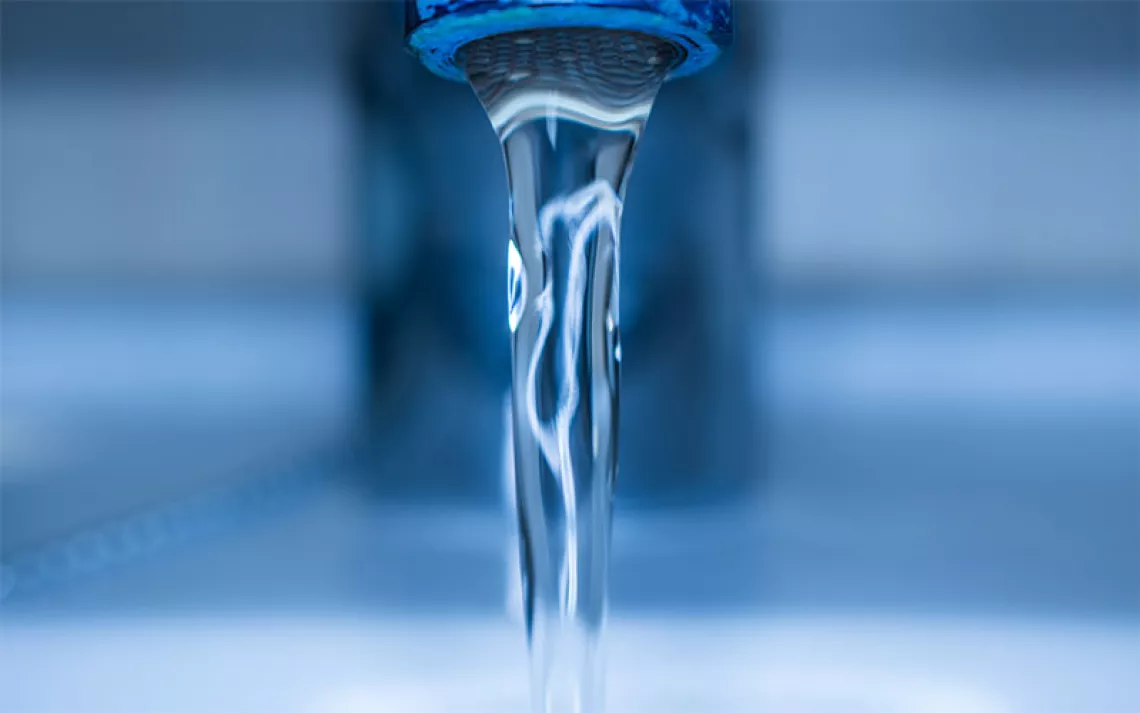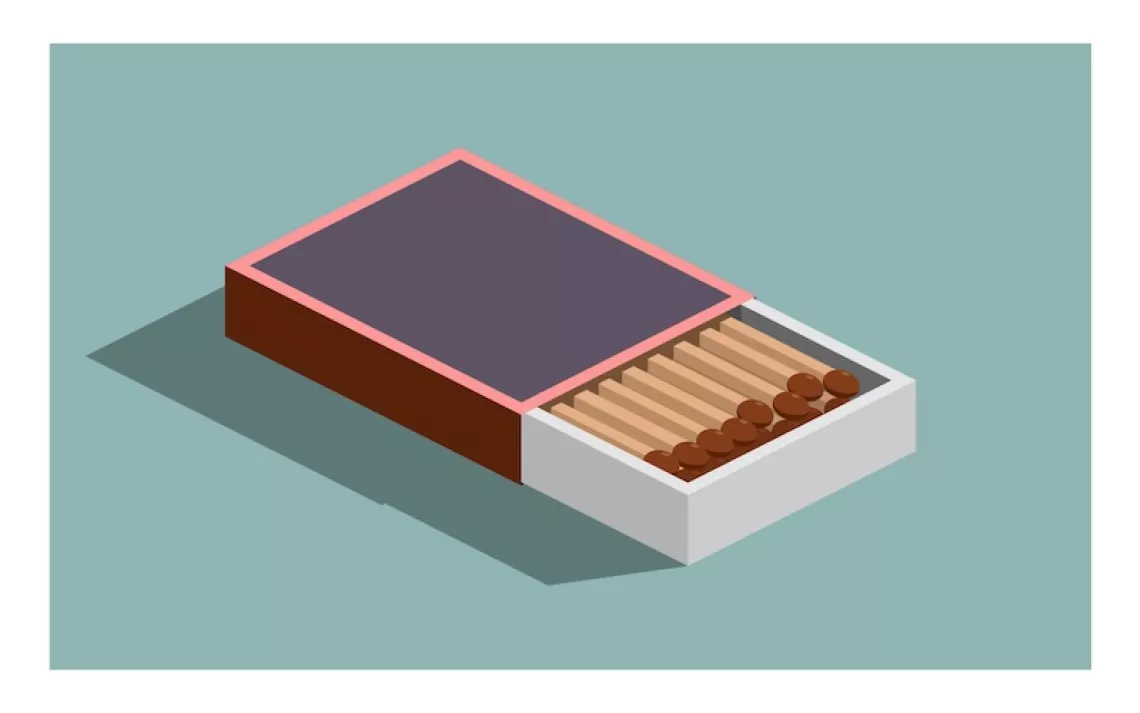New Independent Study Confirms PFAS in Thinx, Other Products
Why all genders should care, plus how to tell if a product is truly PFAS-free

Photo by Bonny Ghosh / AP Photo
You might know me as the person who reported in January 2020 that I mailed my Thinx leakproof, organic menstrual underwear to Professor Graham Peaslee, a nuclear physicist at Notre Dame University. He found toxic chemicals, including PFAS, in it. At the time, I was working on a response to a reader who wanted to know what the best ways were to minimize the environmental impact of their period, and I had been contacting companies like Thinx to find out which products were the least toxic for the environment and for human health. Peaslee and his team found that the inside of the crotch in my organic Thinx organic brief had 3,264 parts per million (ppm) of flourine, and their organic Shorty for teens had 2,053 ppm. That’s high enough to suggest they were intentionally manufactured with PFAS. All PFAS have fluorine. Since the world hasn’t found a way to test which of 9,000 PFAS are in products, the best current test methods look for fluorine.
Some readers then offered to mail me used menstrual underwear to test for toxic chemicals. Though I didn’t take them up on their offer, in March 2020, I detailed why Thinx’s lab tests and ecolabel certifications didn’t test for all the thousands of PFAS. Thinx never answered my questions about which chemicals they added to their underwear since 2018, or if they ever reformulated their underwear. In September 2020, according to a report in E&E News, Peaslee said that after Thinx denied using PFAS in their underwear, he offered to “test their supply chain for free.” Instead of accepting his offer, Thinx emailed him asking for a public statement saying that he didn't think Thinx products were “unsafe to the body.” He declined, telling E&E News that he wouldn't let his daughter wear them.
In January 2021, a class-action lawsuit was filed against Thinx Inc. over the matter, claiming the company should have been more transparent that their products contained “forever chemicals.”
Now another group has conducted its own independent analysis of Thinx and other products, and the results are in. Leah Segedie, founder of Mamavation, an organization dedicated to eco-wellness, just released the first lab tests on PFAS in period and incontinence underwear since my March 2020 article. Mamavation sent 17 pairs of period underwear from 14 brands to Galbraith Labs, a company accredited by the International Organization for Standardization (ISO) to conduct the ion selective electrode test method, a widely accepted and common test method for fluorine. About 65 percent of the underwear had detectable levels of fluorine in either the outer or inner layer of the crotch, Segedie reported. According to the lab report, in October and November 2020, Galbraith Labs found high levels of fluorine in three of Thinx’s underwear (Boyshort, Hi-Waist, BTWN), Knix’s High Rise, and Proof’s Hipster.
Out of all the brands with no fluorine that Mamavation tested, Aisle (formerly known as Lunapads) was the only one made of organic cotton. And Aisle automatically shipped plastic-free, at least they did when I ordered in March 2020.
“Mamavation started testing period underwear because the community was very concerned after discovering that Thinx could be contaminated with PFAS in 2020,” Segedie told me. “It also seemed like a new period underwear company was popping up every week. So we realized that we really needed to test them to give others a snapshot of what was going on in the industry. Mamavation did not receive any money from any brand to do this testing.”
PFAS have been found in high levels in milk and vegetables, thanks to the use of the chemicals in home and industrial fertilizer, in nonstick products, and those made to be resistant to liquid, grease, and stains. They're also used in the manufacturing of climbing ropes, guitar strings, artificial turf, personal care (even floss), lightbulbs, innocent-looking paper foodware, bags and boxes, cookware, carpet, car wash, building supplies (glass, paint, sealers for wood, stone, tile, and concrete), printing, petroleum extraction, mining, industrial laundries, and fire-fighting foams.
PFAS never degrade. PFAS have been found to migrate from waterproof textiles into laundry wash water. They have even been found in drinking water, and typical water purifiers do not remove them. The EPA only requires drinking water utilities to test for six of now 9,000 PFAS.
Some PFAS have been linked to a wide variety of harms to human health, including cancer, decreased fertility, and even decreased immune response to vaccines. A December 2020 study found adults with COVID-19 and the presence of a PFAS called PFBA in their blood had a nearly doubled likelihood of hospitalization. And some of those hospitalized were five times more likely to progress to intensive care or death.
Here’s how to verify for yourself whether the claims a company is making about their products are true.
1. Ask companies to prove their green claims.
If you see products that are “nontoxic” or free of PFCs, PFOA, PFOS, or PTFE, buyer beware! Those are only some of the 9,000 PFAS. Currently, the only ecolabel that certifies a product to be PFAS-free is the Biodegradable Products Institute for compostable foodware. As of February 2021, OEKO-TEX® tests for only about 30 PFAS in textiles, not all 9,000, as noted in Segedie’s article. Even if a company says a product is certified or tested by labs for PFAS or other green claims, don’t buy it until you’ve tried tips #2 to #4 at the bottom of my third Thinx article. For example, you can ask Thinx, Knix, and Proof to stop putting toxic PFAS in their underwear and to post a report from a lab like Galbraith that’s ISO-accredited to conduct an ion selective electrode test method for fluorine.
2. Ask journalists and publications claiming a product is PFAS-free if they saw an ion selective electrode test method lab report for fluorine.
3. Ask nonprofits, state regulators, and elected officials to require that products be tested for toxic chemicals such as PFAS using the ion selective electrode test method for fluorine.
For example, though tampon, pad, menstrual cup, and underwear manufacturers will need to disclose more ingredients on their packaging than they currently do (starting October 1, 2021, if they sell in New York and January 1, 2023, if they sell in California), there’s no law on the books that will require period products to be tested for all 9,000 PFAS, according to Segedie.
Also, if the packaging on a pair of period underwear or a box of tampons only says they're made of cotton, it’s not telling you what makes the underwear leakproof or what bleached the tampon white. If a menstrual cup only says that it's made of silicone, it’s not telling you about potential toxic chemicals. Women’s Voices for the Earth (WVE) plans to work with Clearya so you can see period products that comply with New York’s law while you shop online.
4. Get a refund for toxic products.
Don’t be shy!
 The Magazine of The Sierra Club
The Magazine of The Sierra Club



